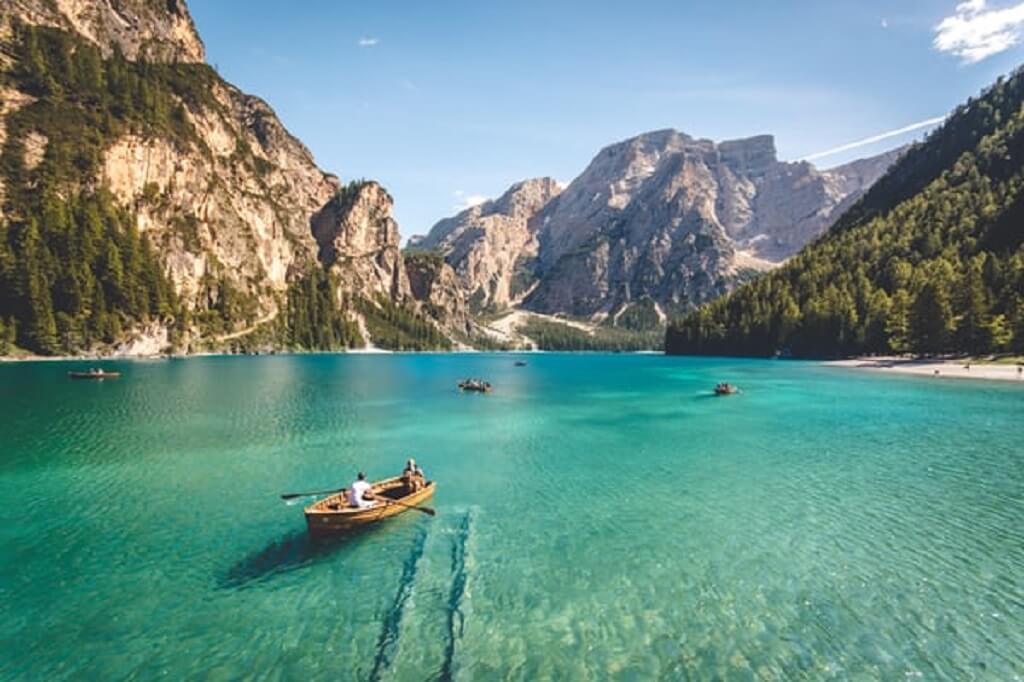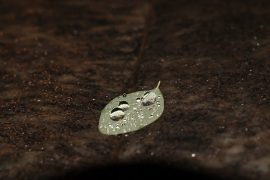Before beginning the topic of tap water filtration, it’s time to take a quick step back to Geology. Geology is the science that deals with planet Earth, its physical structure, and the many activities going on.
A Little Geology
Earth is covered with approximately 71% water and only 3% of that water is fresh, the rest is found in oceans. During the water cycle, water moves from one reservoir to another in continuous motion. If you don’t know where clouds come from, the sun heats bodies of water causing the water to evaporate. As water evaporates, it rises in the atmosphere where cold temperatures turn water vapor into clouds. But that’s not the entire cycle:
Cloud particles bond to each other which condenses the vapor and causes it to fall back as bodies of water in the form of rain, sleet, or snow. (ergo it’s cloudy before it rains).
Then, the entire process starts all over again with the sun warming the water and causing evaporation. The water we drink comes from two leading sources, public sources are water treatment facilities and private sources are wells.
Resources For Tap Water
Water comes from rivers, lakes, and groundwater. Depending on where you live, you might be in a location that gets water from all three sources. There is great diversity in the U.S regarding water sources. There are many locations that rely on rivers and lakes while other places like Boston and Los Angeles rely on reservoirs.
For Example:
- Washington DC gets 100% of its water from the Potomac River
- Chicago from Lake Michigan
- 50% of Los Angeles’ water comes from the Owens River
- 90% of New York City’s water comes from the Catskill/Delaware Aqueduct
How Water Is Treated
From whatever source, water is sent to a treatment facility for processing and sanitizing before being sent to your faucet. There are four steps involved in the treatment process.
- Coagulation and Flocculation
- Sedimentation
- Filtration
- Disinfection
Coagulation and Flocculation is the first step when chemicals are added to water in order to lump small particles together. Added substances or compounds during this process include aluminum sales, activated carbons, talcum, and activated silica.
Sedimentation Process
Water is filtered to remove any fine particles of dust, parasites, microorganisms, bacterial, and chemicals.
Added Chemicals
Water is completely disinfected to make sure any remaining microbial contaminants are destroyed. One such chemical process is chlorinating.
The Distribution of Water
Water distribution systems are designed to carry water to your tap. In the United States, these systems cover nearly one million miles. The systems are made up of pipes, valves, storage facilities, and components that transport the water to the public. The main distribution system lines carry water from:
- A treatment plant to the tap
- The point of supply to the tap when water is untreated
If you don’t know, water tanks and pipes including pipes that carry water to a home and pipes inside homes can all contaminate your drinking water from lead, copper, and plastic.

When plumbing materials such as lead pipes, faucets, and fixtures start to erode, lead will easily enter your water supply. On top of that, water that has high acidity or low mineral content can be even worse because both conditions erode pipes and fixtures. Lead lines that are connected in your home and to the main water line are a major source of lead contamination. These lines are usually found in older cities and homes built before 1996. In homes that do not have lead service lines, the leading offender of contamination is from brass or chrome-plated brass faucets along with lead solder used in plumbing. Also, as systems start to age, deterioration will take place due to corrosion, material erosion, and external pressures.
It’s understandable there are several variables to take into consideration before deciding on a specific water source for your daily drinking water. Clean, mineral-rich water is an important part for our lives, well-being, and households with developing children. Without a doubt, drinking tap water exposes us to chemicals and contaminants. It’s only regulated for relative safety markers but for some families, it’s simply the most affordable option. Some households may choose to have a water filtration system to remove contaminants from their tap water. One such system is reverse osmosis which is a very strong filtration system but it’s also very powerful. It will remove all minerals from water, both good and bad.
Recommended RO System
Here are a few great choices for Reverse Osmosis systems:
The RO System For Filtering Tap Water By Waterdrop
This system will save up to 300% of water vs the standard filter systems with tanks. The Waterdrop RO system has little to no noise which means it’s even quieter than your laptop! It’s the perfect choice for those who own RVs due to its very compact design. This Waterdrop filter system also flushes itself in order to keep your water pure and clean 24/7. The RO filter system comes with a sleek metal faucet and will deliver a fast thorough water flow.
The Frizzlife RO Water Filter System
This system comes without a tank and fits perfectly under your sink. It will eliminate over 1,000 kinds of contaminants from water including chlorine and fluoride along with heavy metals, lead, limescale, and other harmful elements. Frizzlife takes up much less space while removing pollution caused by the unventilated tank. This system is very easy to install by simp0ly following the step-by-step video and detailed instructions in the user manual. Frizzlife produces far less wastewater as a RO system. Across the board, this system produces 1.5 cups of pure water with only 1 cup of wastewater being drained out.
The AMI RO Water Filtration System
You will enjoy great-tasting water from this compact water filtration system that fits perfectly under your sink. It will give you 5-stages of incredible water purification from the AMI Reverse Osmosis water purification filters that eliminate chemicals such as metals including copper, lead, chlorine, rust, and even bad odors. Don’t just hope your water is clean and fresh, make sure it is by installing this system. AMI comes with very clear instructions and offers color-coded tubing to help you out. To learn more, click here
